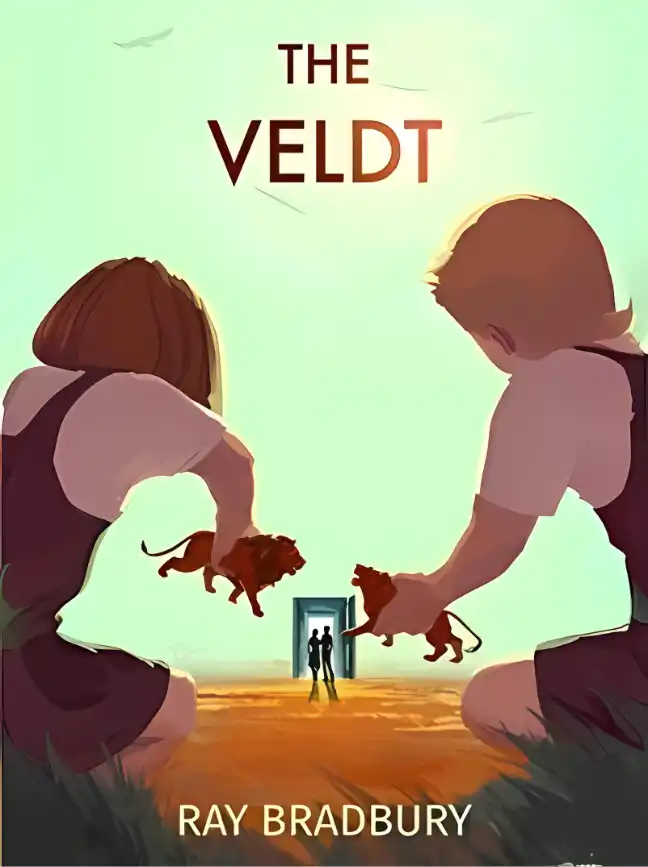After Sam played Master of the Revels for the first time, he called Sadie and asked her if he could come over to discuss it. It was Labor Day weekend, and when he called, she was at her grandmother’s house in Hancock Park. As she was more than halfway across town, she offered to drive over to his house instead.
Sadie drove down Sunset, and past the Happy Foot Sad Foot sign (Happy Foot, but about to become Sad Foot), and then she turned onto Sam’s street. He still lived in the little bungalow he’d rented when he’d first moved to L.A.
“So?” she said. “Let’s have it.”
“So, I absolutely detest,” he paused, “that you made this without me.” Sam smiled at her self-consciously. “It’s great, Sadie. It’s art. It’s the best thing you ever made.”
“I didn’t think that’s what you were going to say.” Sadie could feel herself blushing with pleasure. She didn’t know she still cared what Sam thought.
“Why?”
“Because I thought things had to come from you for you to even be able to see them,” Sadie said.
At Unfair, everyone—Sadie included—was worried about how they were going to market Master of the Revels, a spectacular but aggressively erudite game. In Master of the Revels, the gamer plays from the point of view of multiple characters, all linked in some way to the murder of Christopher Marlowe: Marlowe’s lover; a rival playwright; a twenty-first- century Shakespearean scholar researching the murder of Christopher Marlowe; Christopher Marlowe himself; and finally, the Master of the
Revels, the man in charge of revels (and censorship) for the queen of England. Master of the Revels was part interactive mystery drama, part action-adventure game. Sadie had painstakingly re-created Elizabethan England, and in addition to murder and mystery, the game had a great deal of sex.
Ultimately, they decided that the only way to market it was to be honest about what they thought they had. The press release read: “From the studio that brought you Counterpart High, and visionary game designer Sadie Green, the creator of Ichigo and Mapleworld, comes another groundbreaking adventure. Master of the Revels is unlike anything you have played before. Part mystery, part love story, part tragedy, it is a game for those who believe that games can be art.”
Unfortunately, by invoking Unfair, Ichigo, and Mapleworld, the press release had led game journalists to believe that Master of the Revels was Sam’s game as well. And when they began to book publicity for Master of the Revels, it became obvious that there would be more opportunities to promote the game if Sam was involved. Because of the Mayor Mazer character and the Marriages hoopla, Sam was significantly more famous than Sadie. On some level, Master of the Revels was his game, too. His company had produced it; his name was on it; Sadie was his partner. The marketing people broached the idea of Sadie and Sam going on the road together with Marx first. Marx said he wasn’t sure if either of them would want to do it. But Sam surprised Marx by saying he’d be glad to, if it would help Master of the Revels.
When Marx spoke to Sadie, she was more resistant. “This is going to sound awful and petty, but I don’t want people to think it’s his,” Sadie said.
“They won’t,” Marx said. “I promise you, they won’t. Sam’ll make a point of telling people that he’s just a producer, and that the game was your brainchild.”
In November, Sam and Sadie flew around the country, promoting Master of the Revels at the various cons and retailers. Sam was true to his word. He did not take credit, though journalists were still more interested in talking to him than to her. “This question is for Mazer,” a journalist would
say. “Should games be political?” It was more than irritating that a solid 25 percent of the interviewers assumed that Sam and Sadie were a couple. The journalists would seem slightly taken aback when they were told that they weren’t. Why would a man, in games, work with a woman he wasn’t married to or at least sleeping with? But Sadie took it in stride. The work was the thing, she kept reminding herself. The work was the thing that lasted, but the work only lasted if people knew it existed.
They had been on the road for four days when Sadie came down with a stomach flu. She threw up in the morning, just after lunch, and again after dinner, though she claimed she felt fine the rest of the time, and it didn’t interfere with her ability to promote the game. She suspected the culprit was oysters she’d eaten at a buffet in Vegas. “Perhaps not the best idea to have oysters, from a buffet, in a landlocked city,” she admitted to Sam.
Two days later, they were driving from the Dallas–Fort Worth airport to Grapevine, Texas, when Sadie asked Sam to pull over: she needed to throw up again.
Sadie vomited under a recently planted crepe myrtle tree, and then she told Sam that she wanted to drive, because she thought it would ease her motion sickness. “You drive too slow,” she said.
“Sadie,” Sam said, “do you think there’s any chance you might be pregnant? By my count, this is the seventh time you’ve thrown up in the last three days. It can’t still be the oysters, can it?”
“No, it was the oysters before, but it’s definitely motion sickness now,” she insisted. “And it definitely can’t be morning sickness because I’ve had it the whole day.”
On the way to the hotel, she spotted a drugstore. “I’m going to pop in to get Gatorade and Dramamine,” she said. She also bought a pregnancy test.
The hotel in Grapevine turned out to be an annoyingly charming B&B, with seven rooms, all named for historical figures from Texas. Their travel agent had accidentally booked them into the Parker and Barrow suite instead of two separate rooms. “Do you want me to see if there’s another hotel?” Sam whispered.
“It’ll be fine. It’s a suite in Texas,” Sadie said. “Isn’t everything in Texas supposed to be giant?”
The Parker and Barrow was disappointingly un-Texas-sized: a tiny bedroom, and a tiny sitting room with a convertible couch, and a tiny bathroom that seemed to be in the center of everything. “Our first dorm room at Harvard was like this,” Sam commented.
About a half hour after they’d arrived, she went into the bathroom, and she came out with the box, and the stick in a glass. “I’m sorry,” she said. “This is gross. That bathroom has, literally, no counter space. It’s just a pedestal sink. This hotel is so cute. I want to murder everyone. And I’m also sorry that I’ve been the most disgusting traveling companion ever.” Sam laughed, and Sadie sat down on the couch next to him, and they watched what was playing—that old Disney movie Swiss Family Robinson about the castaway family who live in the tree house—and they waited for the test to work its magic.
Sam saw it change first. “What do two blue lines mean?” He picked up the box to decode it, and Sadie, having already grasped its meaning, went into the bathroom to throw up again—this time it was more mental than physical, but emesis can take on a certain momentum. She brushed her teeth, came back out to the couch, and retook her place next to Sam. Her phone, which was sitting on the coffee table, was ringing. Sam could see it was Marx: she let it go to voicemail. “I want to live in a tree,” she said. “Can we do that for a little while?” She put her head on Sam’s shoulder, and he did not move or say anything, though she still smelled lightly of acid and bile. “We’ve got two hours before we have to be at GameStop HQ,” she said. “Wake me, if I fall asleep.”
—
A month later, December, they went to New York to do even more press, which included a photo shoot for Game Story. The magazine was doing a cover feature on Sam and Sadie, for which the headline would be “Masters of the Revels: Behind the Scenes with Mazer and Green.” For the shoot,
they had both agreed to wear over-the-top Elizabethan-era costumes. Sadie was made up to look like Queen Elizabeth I; Sam, like William Shakespeare. The situation was absurd, and Sadie and Sam could not stop laughing. The photographer, an Italian man in his sixties, didn’t know anything about gaming, or who either of them were.
“You two are married, right?” the photographer said. “She doesn’t believe in marriage,” Sam said.
“It’s true. I don’t,” Sadie said.
“It’ll be different when you have children,” the photographer said. “People like to say that,” Sadie said.
When they had finished taking the photos, Sadie removed her costume and rushed off to the bathroom.
Sam was taking off his doublet when a text came in on the publicist’s phone. “Unfair’s in Venice, isn’t it?” she said. “My friend says there’s an active shooter at a tech company in Venice. You should tell your people to stay inside.”
“That’s awful. Which one?” Sam asked. Though he was concerned for whichever of his Silicon Beach neighbors had met with misadventure, he did not think this information had much to do with him. Unfair was a game company, not a tech company.
“That’s all I know,” the publicist said.
“I’ll call Marx,” Sam said. “Maybe he’ll know what’s up?”
Sam took out his phone: there were several missed calls from Marx in the last fifteen minutes. He tried calling Marx back, but his phone went to voicemail. He called the landline at the office, but despite it being morning on the West Coast, no one picked up.
He went into the ladies’ room to ask Sadie to call Marx. He could hear her throwing up. He knocked on the door of the stall. “Sadie?”
“Samson, why are you in the ladies’ room?”
Sadie came out of the stall. She was growing so accustomed to throwing up that she could get over it quickly. She was about to tease him for following her into the bathroom, but then she saw Sam’s face.








